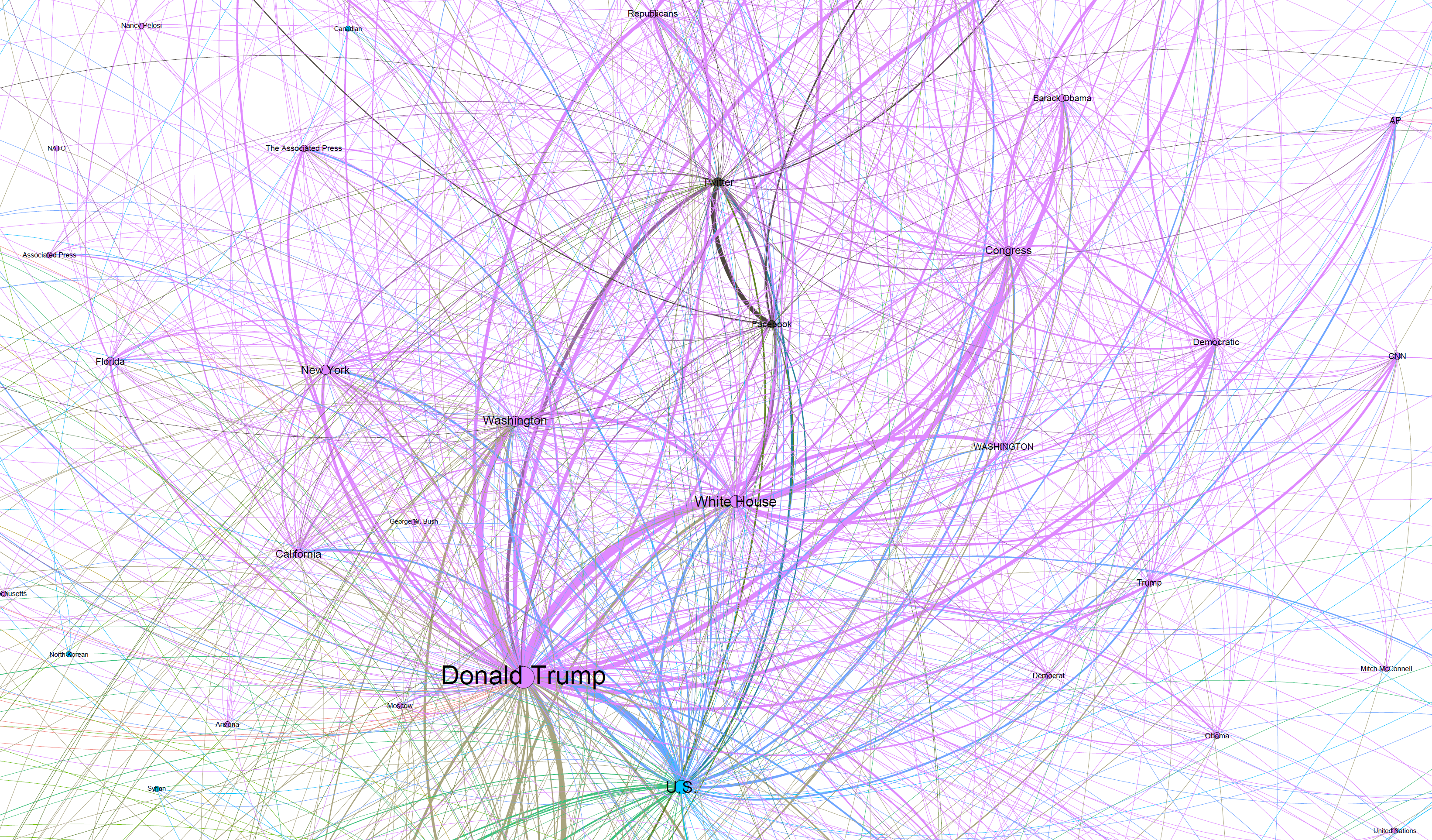Gephi is a tool for data analysts and scientists keen to explore and understand graphs. Like Photoshop™ but for graph data, the user interacts with the representation, manipulate the structures, shapes and colors to reveal hidden patterns. The goal is to help data analysts to make hypothesis, intuitively discover patterns, isolate structure singularities or faults during data sourcing. It is a complementary tool to traditional statistics, as visual thinking with interactive interfaces is now recognized to facilitate reasoning. This is a software for Exploratory Data Analysis, a paradigm appeared in the Visual Analytics field of research.
Gephi Download
Input Data - Graph Formats. Gephi supports more comprehensive file formats which can store node and edge attributes, together with layout and presentation information (e.g. Position, size, colour etc). Native format is a.gephi file, which can contain multiple “workspaces” (i.e. Several different graphs). Hi all, As my this video was made more than an year ago and now not helping for some of you, I have updated it. Please watch the latest video for the same er.
Real-time visualization
Profit from the fastest graph visualization engine to speed-up understanding and pattern discovery in large graphs. Powered by its ad-hoc OpenGL engine, Gephi is pushing the envelope on how interactive and efficient network exploration can be.
- Networks up to 100,000 nodes and 1,000,000 edges
- Iterate through visualization using dynamic filtering
- Rich tools for meaningful graph manipulation
Layout
Layout algorithms give the shape to the graph. Gephi provides state-of-the-art algorithms layout algorithms, both for efficiency and quality. The Layout palette allows user to change layout settings while running, and therefore dramatically increase user feedback and experience.- Force-based algorithms
- Optimize for graph readability
Metrics
The statistics and metrics framework offer the most common metrics for social network analysis (SNA) and scale-free networks.- Betweenness Centrality, Closeness, Diameter, Clustering Coefficient, PageRank
- Community detection (Modularity)
- Random generators
- Shortest path
Networks over time
Gephi App


Gephi is a the forefront of innovation with dynamic graph analysis. Users can visualize how a network evolve over time by manipulating the embedded timeline.
Gephi Vs Graphviz
- Import temporal graph with the GEXF file format
- Run metrics over time (clustering coefficient)
- Graph streaming ready
Create cartography
Use ranking or partition data to make meaningful the network representation. Customize colors, size or labels to bring sense to the network representation. The vectorial preview module lets you put the final touch and care about aesthetics before explorting in SVG or PDF.
- Customizable PDF, SVG and PNG export
- Save presets
Dynamic filtering
Filter the network to select nodes and/or edges based on the network structure or data. Use interactive user interface to filter the network in real-time.- Create complex filter query without scripting
- Build new networks from the filtering result
- Save your favorite queries
Data Table and Edition
 Gephi has its own Data Laboratory with an Excel-like interface to manipulate data columns, search and transform the data.
Gephi has its own Data Laboratory with an Excel-like interface to manipulate data columns, search and transform the data.- Powerful Search/Replace
- Manipulate columns
- Batch-edit, custom column merge and more
Input/Output
Gephi D3
Gephi can read the majority of graph file formats but also supports CSV and relational databases import.
- Spreadsheet import wizard
- Database import
- Save/Load project files
Extensible
Gephi.org
The built-in Plugins Center automatically gets the list of plugins available from the Gephi Plugin portal and takes care of all software updates. There are dozens of community-built plugins that extends Gephi's functionalities.
Latest Help files
Discussion groups
Video tutorials
Gephi Snap
- YouTube Tutorials (by Laurence Anthony)
- YouTube Tutorials (by Monika Bednarek)
- YouTube Tutorials (by Hyun Jung)
- YouTube Tutorials (by Umair Ibne Abid of Umair Linguistics)
- Youku Tutorials (by Laurence Anthony)
Downloadable guides
- Guide by Warren Tang (Hiroshima University, Japan)
- AntConc 3.2.1 Tutorial (in English) Latest version available here.
- Guide by Taku Kaneta and Akira Murakami (Tokyo University of Foreign Studies, Japan)
- AntConc 3.2.2 Tutorial (in Japanese)
- Guide (in French) by Yacoub Ghérissi (Interlingua, France)
- Help file translations
- AntConc3.3.5 (in Arabic) by Ahmad Haider (University of Canterbury, New Zealand
- AntConc3.2.1 (in Chinese) by Xiong Qing'an (University of Electronic Science and Technology of China, Chengdu, China)
- AntConc3.1.0 (in German) by Regine Muller
- AntConc3.2.4 (in Korean) by Dr CK Jung (Centre for Corpus Research, Yonsei University, Korea)
- AntConc3.4.4 (in Portuguese) by Laboratory of New Technologies in International Relations - LANTRI (Julia S Borba Gonçalves)
- AntConc3.4.4 (in Spanish) by Jesús Aparicio Boussif (Universidad de Córdoba, España)
